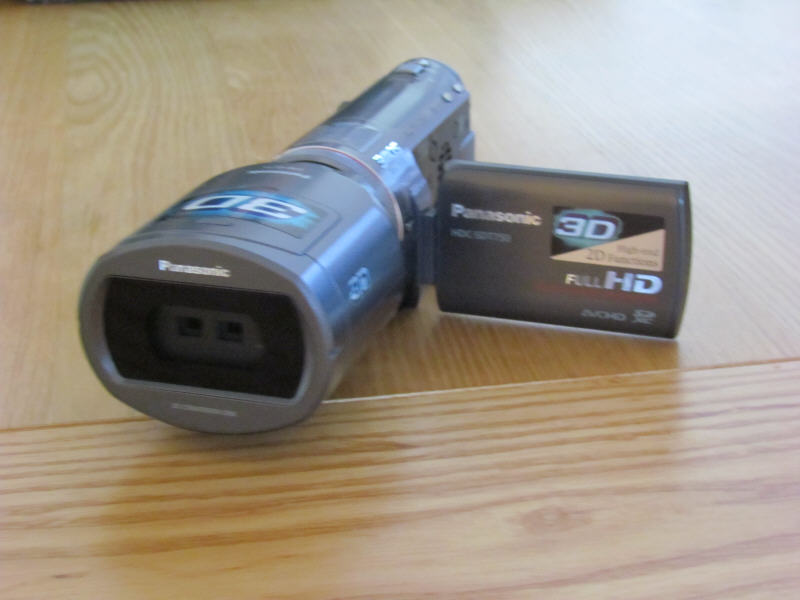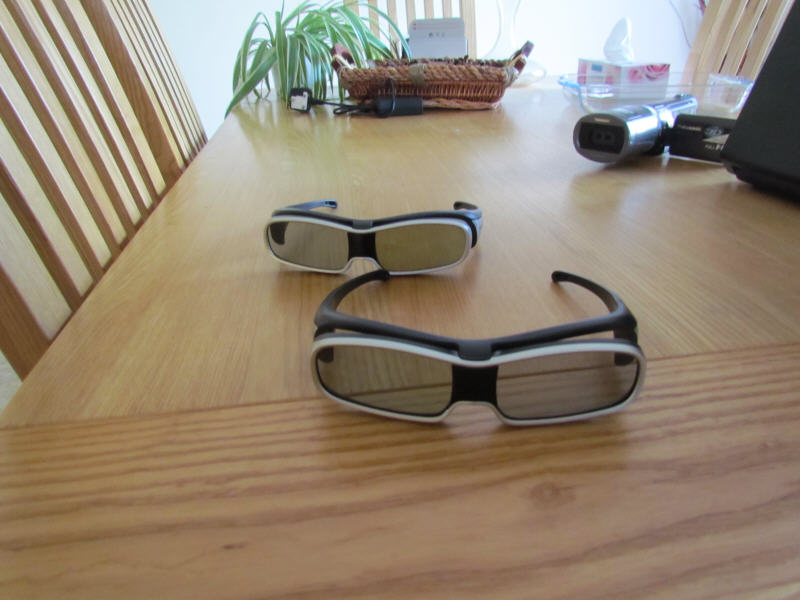John Kennedy road-tested a 3D kit comprising a Panasonic SDT750 3D camcorder, 50-inch Viera TV and 3D Blu-Ray player. Panasonic’s vision brings 3D closer to home than you would believe.
At CES this year, 3D TV rivalled tablet computers in terms of the amount of attention devoted to these technologies. From an optics perspective, 3D won because it’s pretty hard to ignore thousands of large screens pumping out dance music and the latest blockbuster movies.
Panasonic itself had a pretty mesmerising display of 3D technology in action at CES, with some 50 or so large HD and 3D screens joined together to create one gigantic cinematic experience.
As I roamed the aisles of HD 3D displays at CES from a variety of manufacturers, including Sharp, Samsung and Sony, and knowing I was about to road test a Panasonic 3D kit, I got to wondering about something the president of Samsung’s US consumer business division John Revie said a day earlier. He said 9m HD TVs are expected to ship this year and 60pc of the TVs that will go to market this year will be internet connected and 3D capable.
Therefore, a couple of months later and as 3D devices like Nintendo’s 3DS hit the stores, I can’t help but think that this 3D revolution could be every bit as profound as HD and Blu-Ray have been in just three to four years. Soon mobile phones will be 3D-capable and who knows, maybe next year we’ll see our first 3D media tablet devices.
Personally, probably because I’ve one weak eye, 3D never just worked for me. Physically it didn’t, there was no wow factor. That’s why I was a bit dubious about the move of 3D into big business consumer electronics. While I was amazed at some of Sky’s 3D plans and products, I still wasn’t massively convinced.
So equipped with the Panasonic SDT750 3D camcorder, a 50-inch Viera HD 3D TV and a 3D Blu-ray player, I decided to test out what these consumer electronics giants were battering at my senses a few months back at CES.
Recording in 3D
Firstly, the SDT750 at its most basic level and if you detach a special 3D lens from the front of the device converts into an impressive 14.2-megapixel 2D camcorder with a flip-out screen with high-end 2D functions, such as 1,080p wide-screen recording.
The SDT750 fits ergonomically into the hand, bolstered by a soft leather hand grip and using your thumb you can easily flip between various functions, such as still or video or playback, record and zoom in and out. The big surprise for me, however, was the flip-out screen, which had touch functionality so you could flip between stills and videos and zoom in and out with your fingers as well as choosing various menu commands.
On its own virtues, the 2D camcorder is a sophisticated piece of machinery that is light, compact and undeniably state of the art with impressive sound capabilities.
When you add the 3D lens (VW-CLT1), things get slightly more complicated. The lens comes with a lens cap that has symbols inside that are there for a reason. Once you turn on the 3D camera you have to flip open a little top cover with three wheels because inside the lens are three camera lenses that need to be lined up and calibrated in order to capture crystal-clear images.
I found this whole calibration thing at first a bit of a turn off, but you have to be reasonable, aligning three separate camera lenses to record in 3D is no mean feat and the ability to do it within seconds is quite a feat in itself. However, I believe many of the latest devices will come with automatic calibration capabilities.
Another plus for the SDT750 is its battery. If you use the camera only intermittently you could get weeks out of it. Unlike most camera batteries which seem to last days, this is a pretty sturdy component that does its job well.
Once you’re ready to record in 3D you immediately get to see some of the limitations of the technology today. While in 2D mode, the possibilities are endless, with a smooth and beautiful zoom in and out capabilities. In 3D mode, you can’t zoom in or out, it’s static. So if you do plan to record something in 3D, plan your shot well.
From the small screen to the big screen
Transferring media from the SDT750 was again smooth and efficient. You have a variety of options, including HDMI, USB and of course by SD card. As well as the various transfer slots, the camera has 32GB of internal memory.
In future, we’ll probably transfer media from these devices to HD screens with a flick of the finger, but for now, SD card is my preferred route. That’s where the 50-inch Viera TV performed magnificently and again compels me to believe TVs can and will be the home computing hub in the decades ahead.

At the side of the TV – which incidentally has four HDMI slots – all the slots you need for various cards and cables were conveniently located on the left-hand side and all I had to do was slot in the SD card and suddenly a menu appears as it would on a PC asking me which video I wanted to choose.
My subject for my first foray into 3D cinema was the household tuxedo cat Erdinger – ‘Dinger’ for short – whose first on-screen performance was as expected legendary. He nosed and pawed at the camera while I recorded, the legend.
I then snapped the SD card out of the camera and put it straight into the TV and the whoop of surprise from my partner as Dinger’s head and paws seemed to protrude out of the TV told me it had the desired effect.
The 50-inch Viera TV comes with two pairs of 3D glasses and while it still feels a little alien to be wearing what look like designer sunglasses to watch TV or DVDs, it is compelling technology.
Panasonic supplied a sample DVD disc of various 3D films, such as the Beijing opera, 2008 Beijing Olympics, 3D video games and ballet. I have to admit I was slightly mesmerised by the sensation of dancers appearing to hang midair.
But don’t expect this technology to come cheap. The SDT750 with the attachable 3D lens will cost anything up to €1,300 and the 3D-capable TVs in today’s market start at around €700 and go as high as more than €2,000, depending on the model. For example, a Panasonic VT20 full 3D 50-inch plasma TV retails in Harvey Norman for €2,399.
All in all, my first taste of the 3D home confirms in my mind that 3D is ultimately where it’s at. I think this revolution will be driven by the array of access devices that will flood the market beyond camcorders but also phones, tablets and gaming devices, too. It’s an exciting time for TV lovers.
